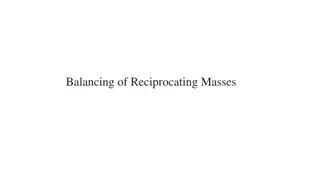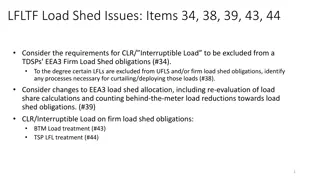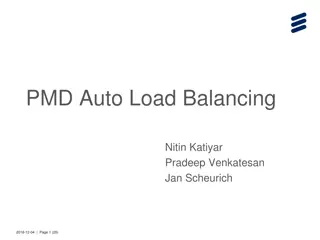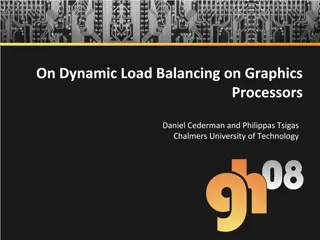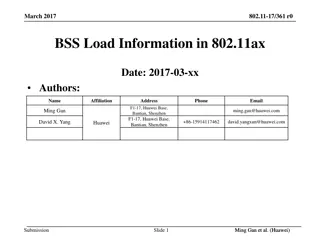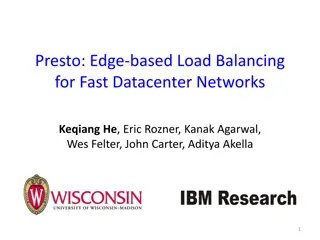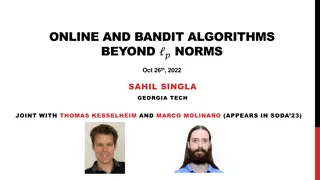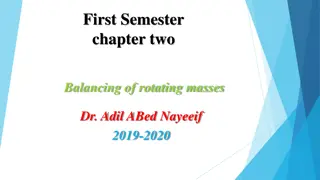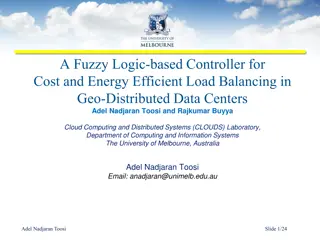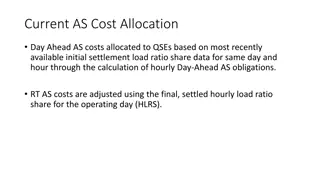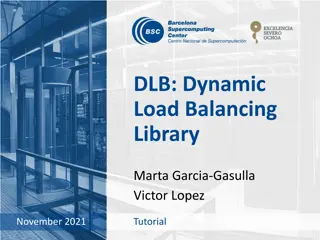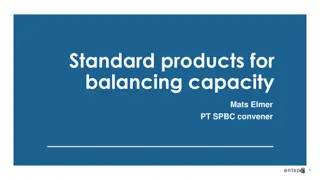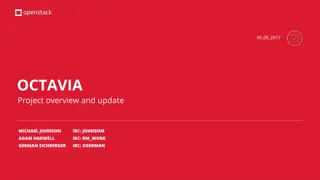Understanding GreedyLB and RefineLB Load Balancing Strategies
Explore the GreedyLB and RefineLB load balancing algorithms, their implementation steps, utilization before and after load balancing, object migration statistics, and cost considerations. Learn how the strategies optimize the mapping of objects to processors for efficient load balancing.
Download Presentation

Please find below an Image/Link to download the presentation.
The content on the website is provided AS IS for your information and personal use only. It may not be sold, licensed, or shared on other websites without obtaining consent from the author. Download presentation by click this link. If you encounter any issues during the download, it is possible that the publisher has removed the file from their server.
E N D
Presentation Transcript
Load Balancing Understanding GreedyLB and RefineLB strategies
GreedyLB Algorithm 1: The GreedyLB Algorithm begin Data: Vt (the set of chare objects), Vp (the set of processors), Gp (the background load of processors) // due to non-migratable objects, etc. Result: Map : Vt Vp (An object mapping) // build heap of size equal to the number of objects ; ObjectHeap objHeap(|Vt|); Vt objHeap ; // insert each element of Vt in objHeap MinHeap cpuHeap(P); //Initially processors are empty with only background load; Gp cpuHeap; for i 1 to nmigobj do o= objHeap.deleteMax(); donor cpuHeap.deleteMin(); Assign c to donor and record it in Map; donor.load += c.load // add object load of c to the donor; cpuHeap.insert(donor) ; end
GreedyLB Utilization before LB
GreedyLB Utililzation after LB
GreedyLB Before LB 85ms/step After LB 60 ms/step
GreedyLB Object Migration time Statistics collection Strategy decision time LB took 100 msec Timeline of 140ms
Costs of Balancing Load Costs Statistics collection Decision making Object Migration In our example, the migration cost was small because the objects were relatively tiny In real apps, each object may occupy (say) 5-10% of processor memory Can we trade off some quality of load balancing for a reduction in load balancing time?
RefineLB begin Data: Vt (the set of objects), Vp (the set of processors), Result: P : Vt Vp (An object mapping) // build heap; ProcessorHeap heavyProcs(Vp); Set *lightProcs; While (!done) donor heavyProcessors->deleteMax() While (ligthProcs) obj, lightProc BestObjFromDonor(donor) if (obj.load + lightProc.load > avg_load) continue; if (obj_obtained) break; deAssign(obj, donor) assign(obj, lightProc) end
RefineLB Before LB 85ms/step After LB 67ms/step
RefineLB Utilization after LB
RefineLB at Load Balancing Time taken for LB 0.01 sec Timeline of 140ms
GreedyLB followed by RefineLB Before LB 85ms/step After LB 60ms/step
RefineSwap Sometime Refine gets stuck Esp. when the number of chares per PE is small Any object from the heaviest loaded processor is too heavy to add to the lightest loaded processor It becomes overloaded Solution: swap objects rather than donate them
Histogram of load on PEs RefineLB RefineSwapLB
RefineSwapLB Before LB 85ms/step After LB 62ms/step
RefineSwapLB Time taken for LB 0.03 sec
NPB : BT-MZ with GreedyLB Timeline of 5.5 sec Strategy time 0.021sec Migration time 2.3sec (1015 migrations)
NPB : BT-MZ with RefineLB Timeline of 5 sec Strategy time 0.0005sec Migration time 0.013sec (13 migrations)
BT-MZ RefineLB Closeup Timeline of 200 ms Strategy time 0.0005sec Migration time 0.013sec (13 migrations)



